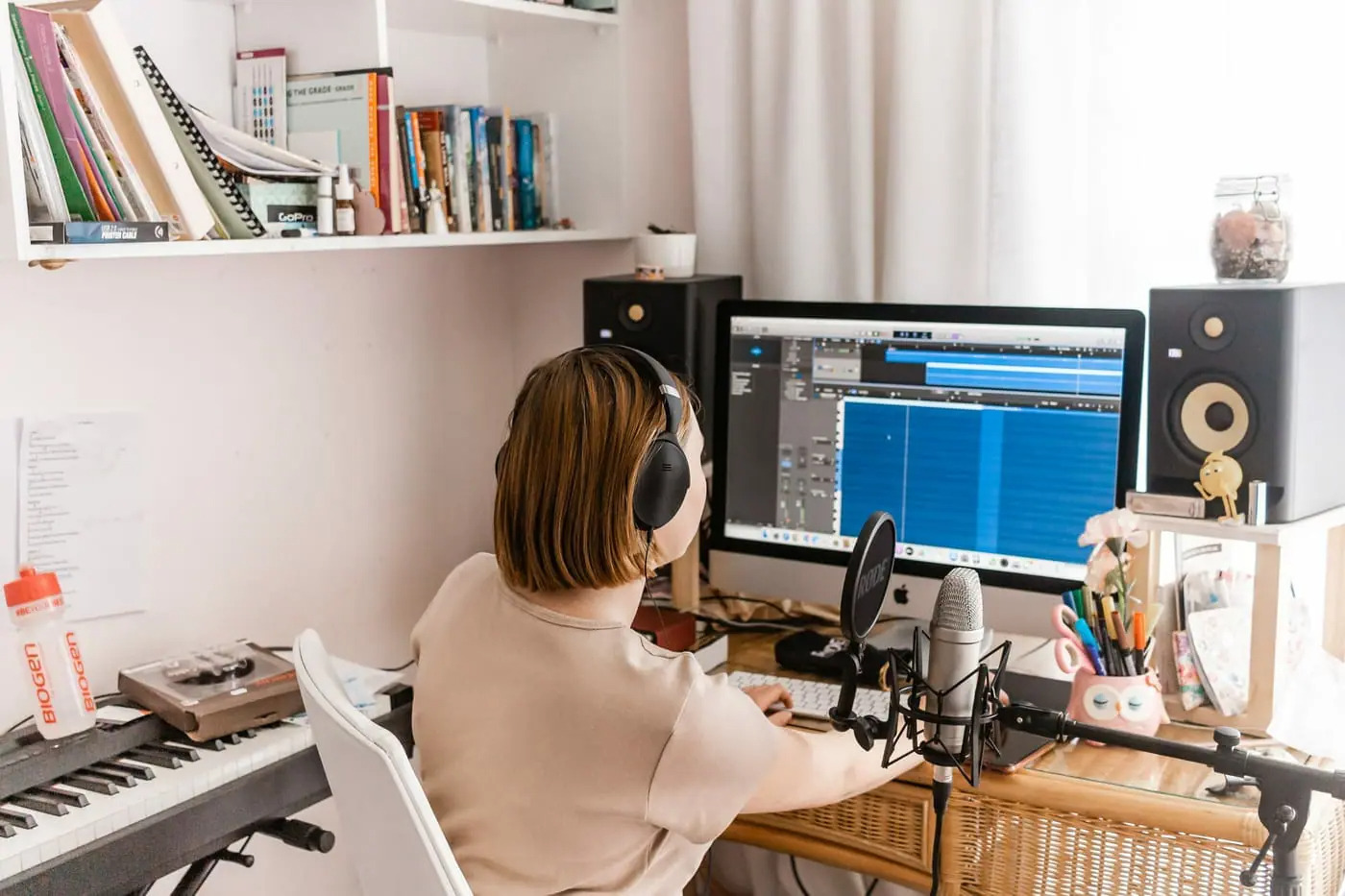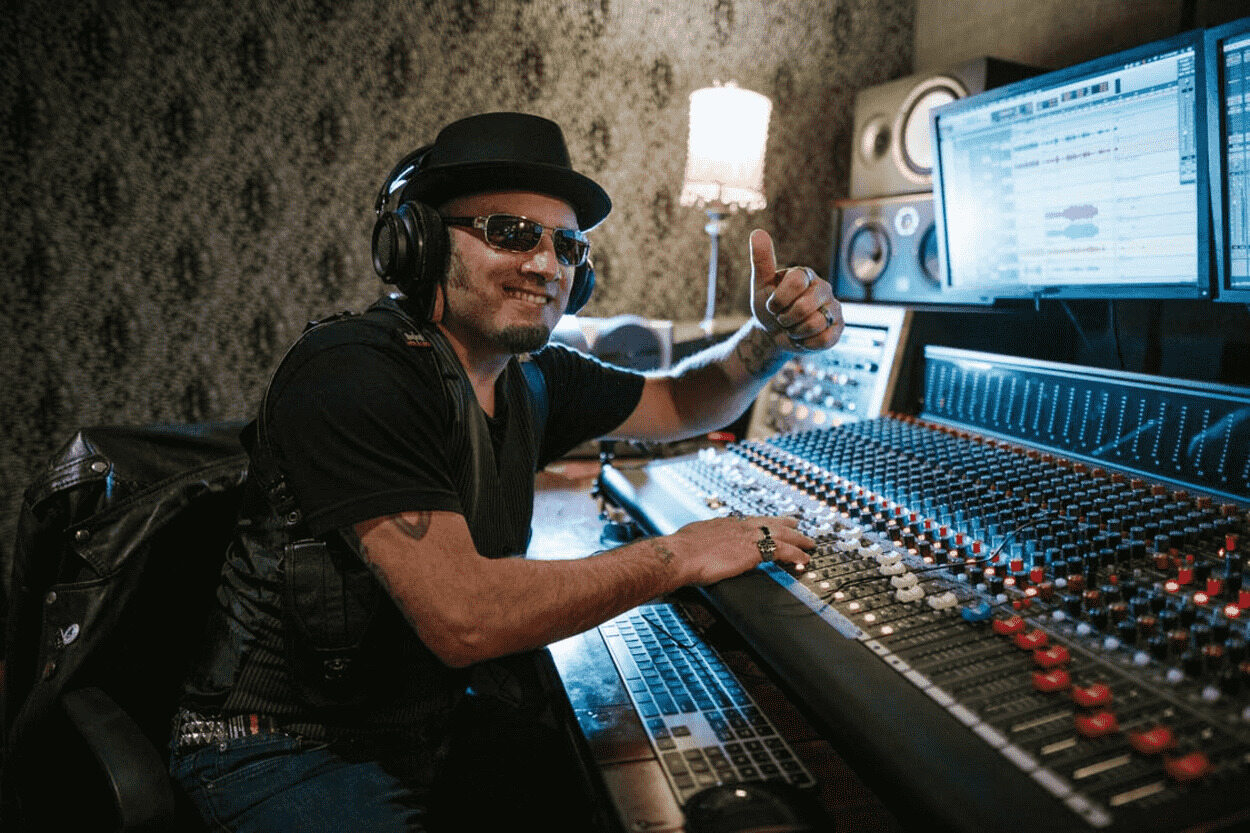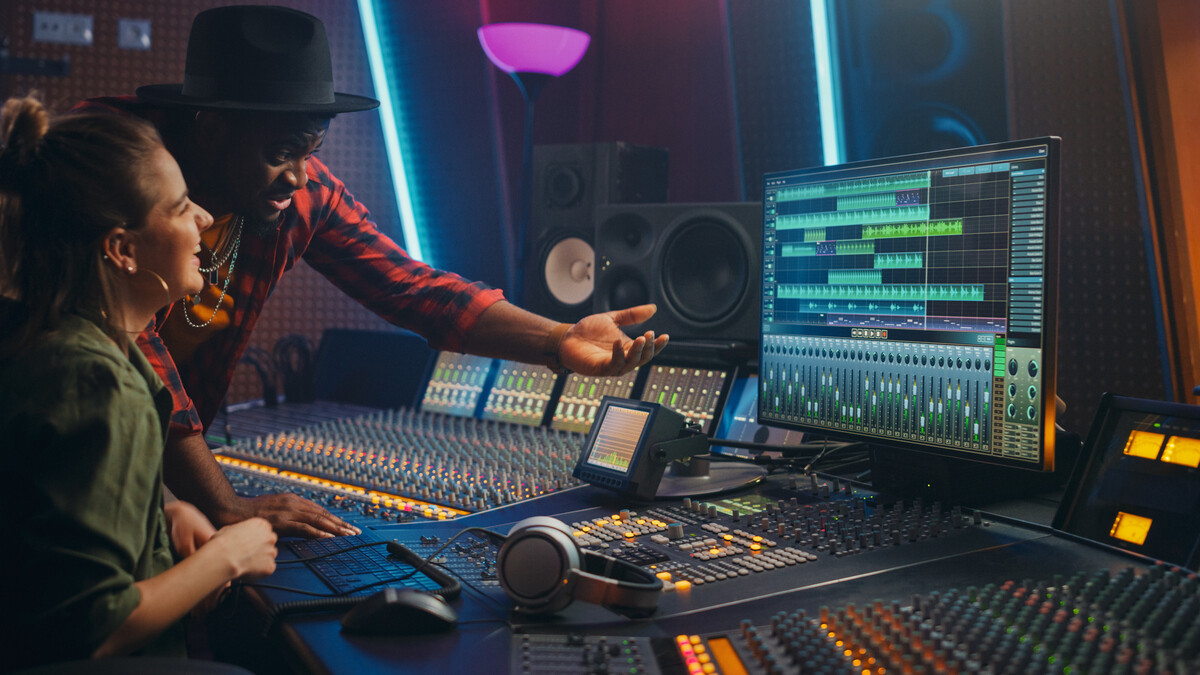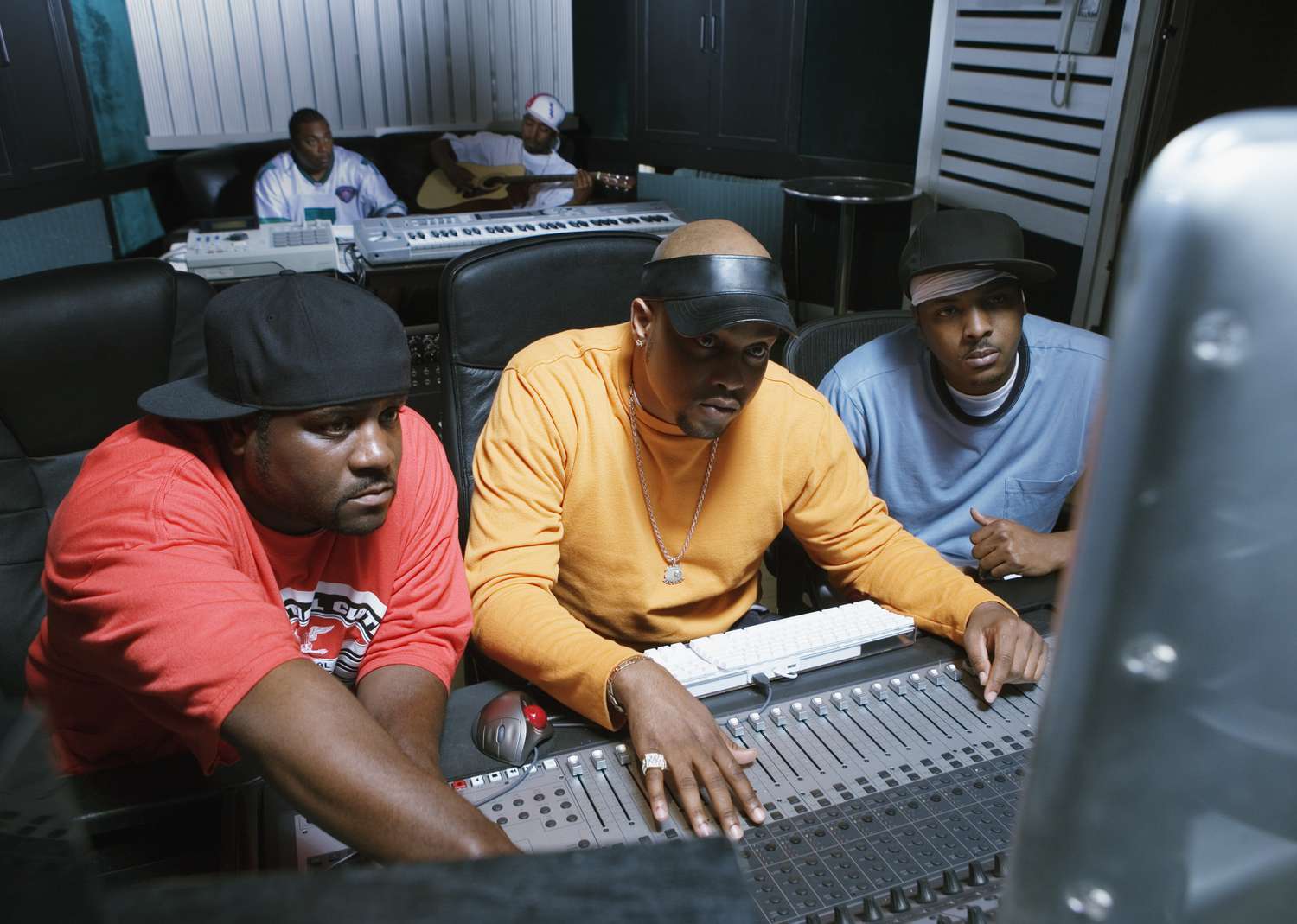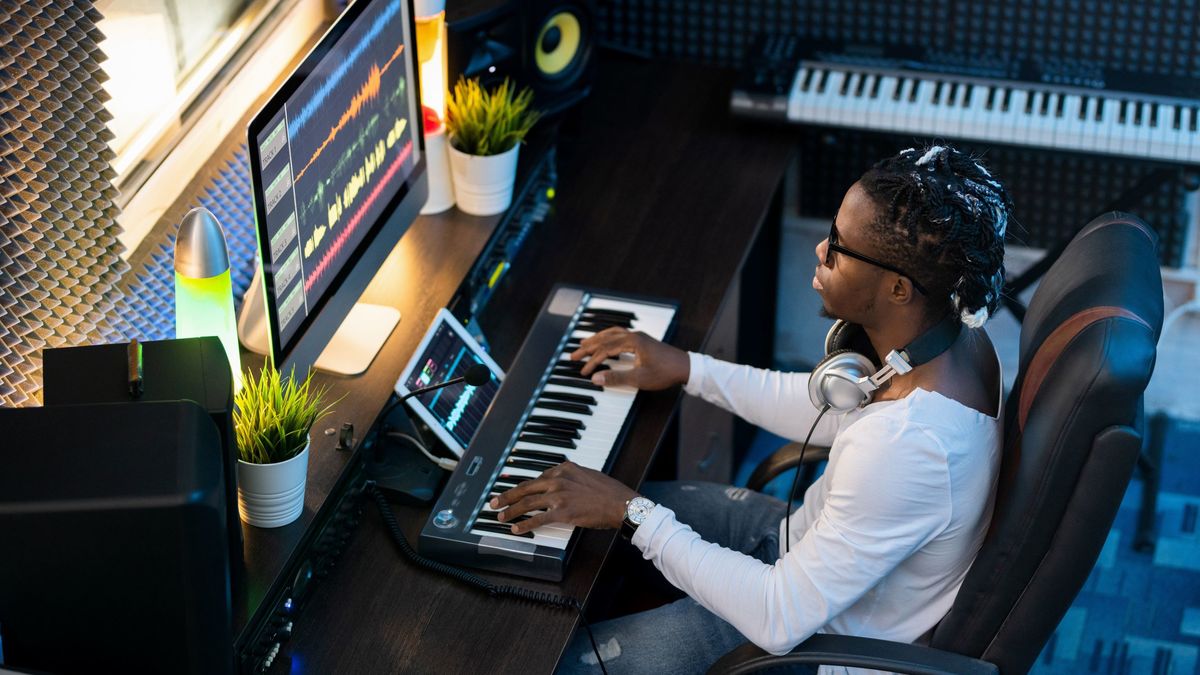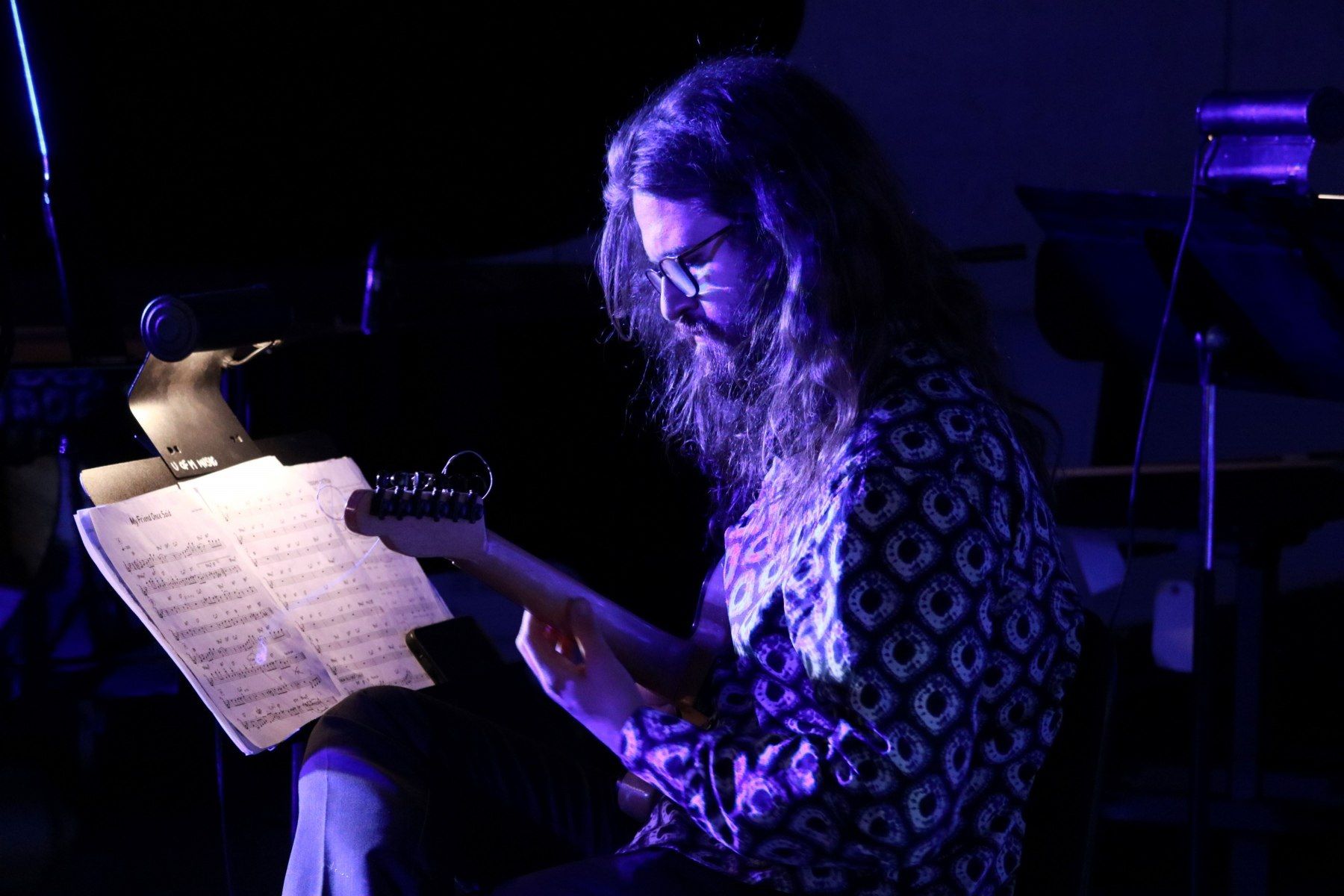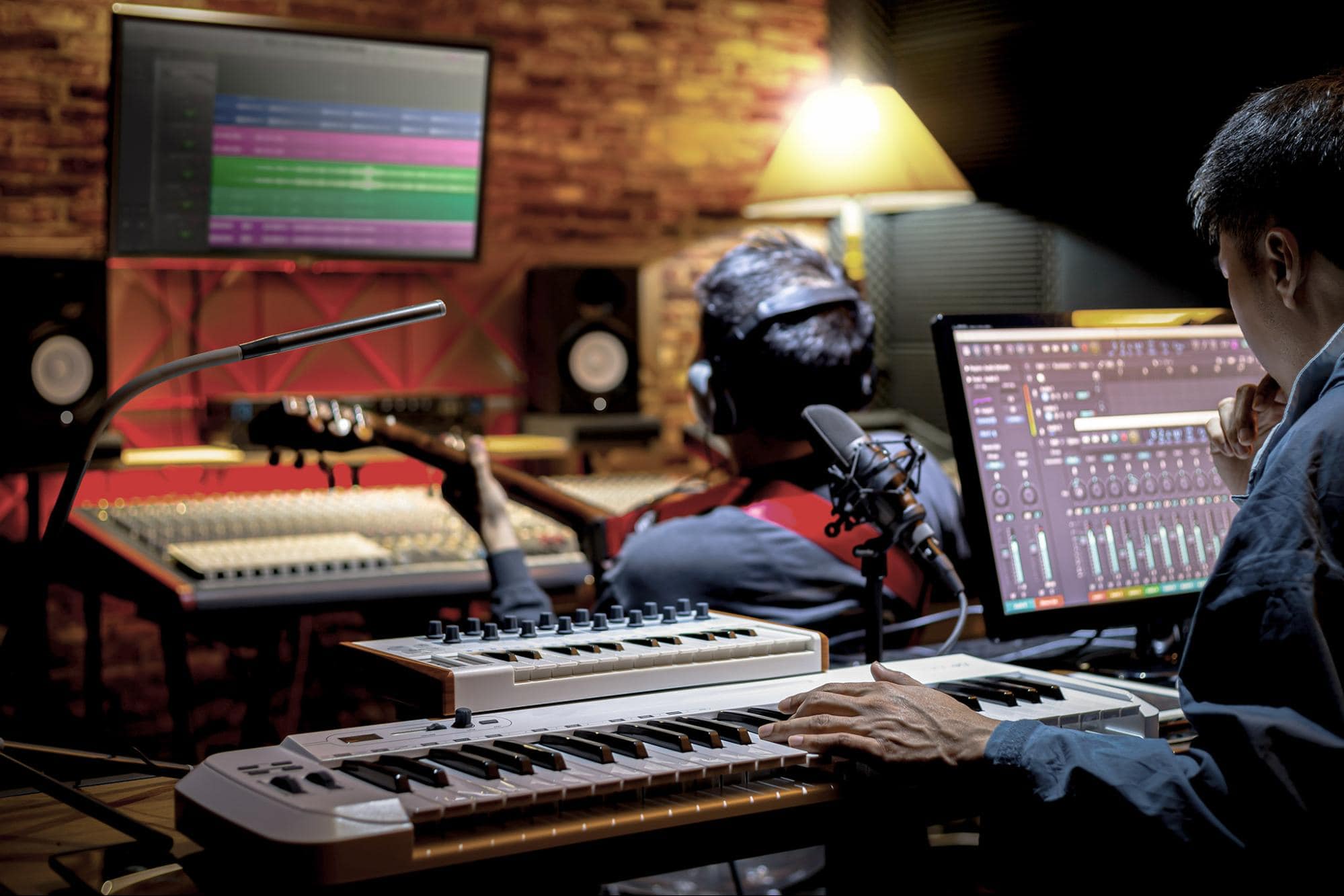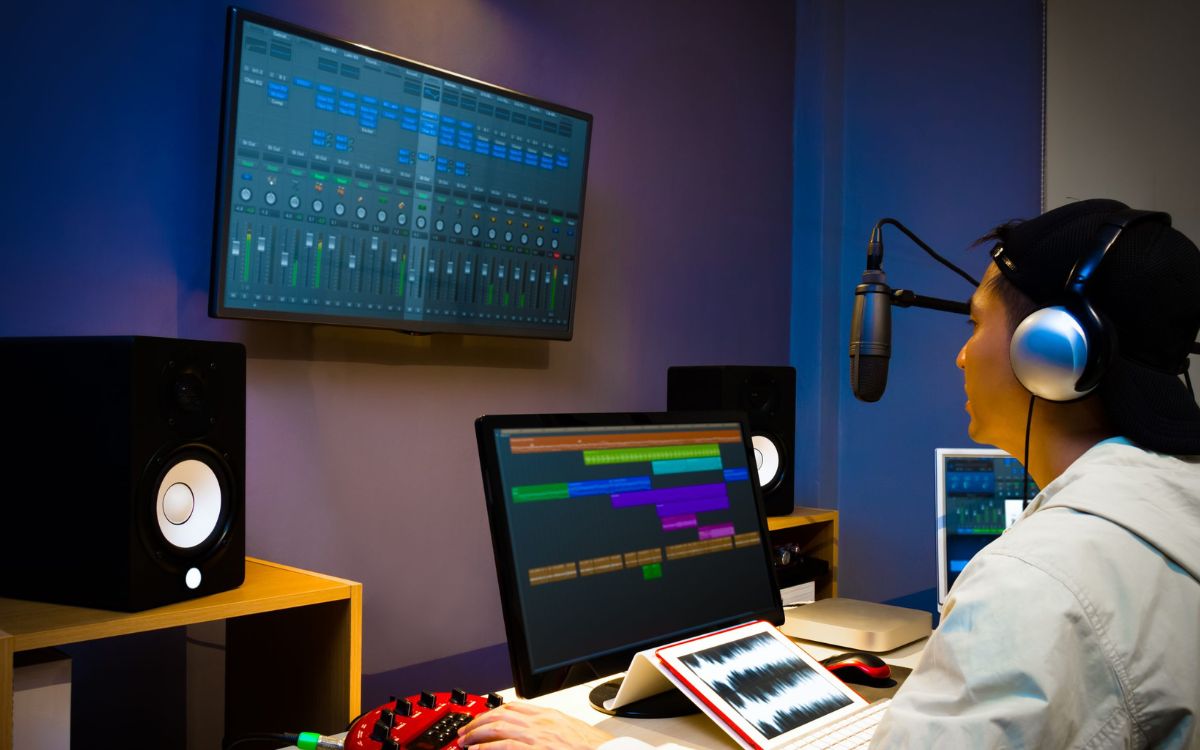Home>Production & Technology>Producer>What Software Does A Music Producer Need


Producer
What Software Does A Music Producer Need
Published: March 6, 2024
Discover the essential software tools every music producer needs to create, mix, and master tracks. Find out how to streamline your workflow and boost your productivity as a producer.
(Many of the links in this article redirect to a specific reviewed product. Your purchase of these products through affiliate links helps to generate commission for AudioLover.com, at no extra cost. Learn more)
Table of Contents
Digital Audio Workstation (DAW)
A Digital Audio Workstation (DAW) is the heart and soul of a music producer's toolkit. It's the software environment where all the magic happens, where ideas are transformed into sonic masterpieces. With a plethora of options available in the market, choosing the right DAW is crucial for a producer's workflow and creativity.
Key Features
A versatile DAW offers a comprehensive set of features to cater to various production needs. It provides a platform for recording, editing, arranging, mixing, and mastering audio tracks. The intuitive user interface, flexible workflow, and powerful editing tools are essential for capturing and refining the nuances of musical compositions.
Compatibility and Integration
Compatibility with different operating systems and seamless integration with third-party plugins and hardware are vital considerations. A DAW should support a wide range of audio formats and be capable of handling large-scale projects without compromising performance.
Virtual Instruments and Effects
The inclusion of virtual instruments and effects within the DAW expands the creative possibilities for producers. From realistic emulations of classic analog gear to cutting-edge synthesizers and samplers, a rich library of virtual instruments empowers producers to explore diverse sonic landscapes.
Workflow Optimization
Efficient workflow features, such as customizable templates, quick shortcuts, and project organization tools, streamline the production process. Time-saving functionalities and automation capabilities enable producers to focus on the artistic aspect of music creation.
Collaboration and Sharing
In today's interconnected world, collaboration and sharing capabilities are essential. DAWs that facilitate seamless collaboration among musicians and allow for easy file sharing and project management contribute to a dynamic and interconnected music production ecosystem.
Final Thoughts
Ultimately, the choice of DAW is a deeply personal decision for music producers. It's not just about the technical specifications but also about the intangible connection that a producer feels when using the software. Whether it's the sleek interface of Ableton Live, the industry-standard status of Pro Tools, or the boundless creativity of FL Studio, the right DAW becomes an extension of the producer's musical identity, enabling them to bring their sonic visions to life.
Virtual Instruments and Sample Libraries
Virtual instruments and sample libraries are indispensable tools for modern music producers, offering a vast sonic palette to enhance and enrich their compositions. These software-based instruments and meticulously curated sample collections provide a diverse range of sounds, from lifelike emulations of acoustic instruments to futuristic electronic textures.
Virtual Instruments:
Virtual instruments, also known as software synthesizers, emulate the sounds of traditional acoustic instruments, vintage analog gear, and cutting-edge digital synthesizers. They enable producers to access a wide array of sounds without the need for physical instruments, expanding creative possibilities and breaking the barriers of traditional instrumentation. From the warmth of a grand piano to the ethereal textures of a synthesizer, virtual instruments empower producers to sculpt their sonic landscapes with precision and artistry.
Sample Libraries:
Sample libraries are treasure troves of meticulously recorded audio snippets, capturing the nuances of real-world instruments, vocal performances, and environmental sounds. These samples serve as building blocks for creating unique compositions, adding realism and depth to the music. Whether it's the organic resonance of a string ensemble, the rhythmic pulse of world percussion, or the evocative ambience of nature, sample libraries provide a rich tapestry of sonic material for producers to weave into their productions.
Creative Inspiration:
Virtual instruments and sample libraries serve as wellsprings of creative inspiration, sparking new musical ideas and pushing the boundaries of sonic exploration. The ability to experiment with diverse sounds and textures ignites the creative spark within producers, leading to innovative compositions that transcend genre boundaries and defy conventions. Whether it's crafting lush orchestral arrangements, designing otherworldly soundscapes, or infusing electronic tracks with organic elements, the sonic versatility offered by virtual instruments and sample libraries fuels the imagination of producers.
Quality and Authenticity:
The quality and authenticity of virtual instruments and sample libraries play a pivotal role in shaping the sonic identity of a production. High-fidelity samples and meticulously crafted instrument emulations capture the essence of real instruments, ensuring that the virtual counterparts exude the same expressive qualities and tonal richness. This attention to detail and sonic fidelity allows producers to create music that resonates with depth and emotion, transcending the limitations of digital replication to evoke genuine musical experiences.
Evolution of Sound:
As technology advances, virtual instruments and sample libraries continue to evolve, pushing the boundaries of sonic realism and expressive capabilities. The integration of advanced sampling techniques, dynamic articulations, and intelligent scripting empowers producers to craft performances that rival the authenticity of live recordings. Furthermore, the fusion of artificial intelligence and machine learning in sound design opens new frontiers for creating unprecedented sounds, revolutionizing the way producers interact with virtual instruments and sample libraries.
In essence, virtual instruments and sample libraries are indispensable assets in a music producer's arsenal, serving as catalysts for creativity, sonic exploration, and artistic expression. With their boundless sonic potential and unwavering commitment to quality, these tools elevate music production to new heights, allowing producers to craft immersive and evocative soundscapes that captivate listeners and stand the test of time.
Audio Interface
An audio interface stands as a pivotal component in the setup of a music producer, serving as the bridge between the analog and digital realms of audio. This essential piece of hardware facilitates the seamless conversion of audio signals, enabling producers to capture, process, and playback high-fidelity sound with precision and clarity.
High-Quality Audio Capture:
The primary function of an audio interface is to capture audio signals from microphones, instruments, and other sound sources, ensuring pristine recording quality. Equipped with preamps and analog-to-digital converters, the interface translates analog audio signals into digital data, preserving the nuances of performances and sonic textures with utmost fidelity. This capability is paramount for capturing the expressive subtleties of vocals, acoustic instruments, and ambient sounds, laying the foundation for immersive and captivating musical productions.
Low-Latency Monitoring:
In addition to its recording capabilities, an audio interface offers low-latency monitoring, allowing producers to monitor incoming audio signals in real-time without perceptible delay. This feature is indispensable for performers and producers, as it ensures that they can hear themselves or other musicians without the disorienting effect of latency, fostering a natural and responsive musical environment during recording sessions.
Connectivity and Versatility:
Modern audio interfaces come equipped with a diverse array of connectivity options, including XLR, TRS, and MIDI ports, catering to a wide range of audio devices and studio setups. The flexibility offered by multiple inputs and outputs enables producers to interface with microphones, instruments, studio monitors, and external hardware processors, creating a cohesive and adaptable audio ecosystem that aligns with their creative vision and technical requirements.
Signal Processing and Integration:
Many audio interfaces incorporate built-in signal processing features, such as EQ, compression, and reverb, empowering producers to shape and enhance audio signals at the source. Furthermore, seamless integration with digital audio workstations (DAWs) and recording software ensures smooth communication between the interface and the production environment, facilitating efficient and intuitive control over recording, playback, and signal routing.
Portability and On-the-Go Production:
For producers who require mobility and flexibility, compact and portable audio interfaces offer a compelling solution. These streamlined devices provide professional-grade audio capture and playback capabilities in a compact form factor, enabling producers to embark on creative endeavors outside the confines of a traditional studio environment. Whether recording field recordings, capturing live performances, or producing music on the go, portable audio interfaces empower producers to unleash their creativity in diverse settings.
In essence, an audio interface represents a cornerstone of the modern music production workflow, embodying the seamless fusion of analog authenticity and digital precision. With its ability to capture, monitor, process, and integrate audio signals with uncompromising quality and versatility, the audio interface empowers producers to realize their sonic visions with unparalleled fidelity and creative freedom.
MIDI Controller
A MIDI controller serves as a dynamic interface that empowers music producers to interact with their digital audio workstations (DAWs) and virtual instruments in a tactile and expressive manner. This versatile piece of hardware transcends the limitations of traditional mouse and keyboard input, offering a hands-on approach to music creation and performance.
Expressive Performance Control:
MIDI controllers come in various forms, including keyboard controllers, pad controllers, and knob-based controllers, each tailored to specific musical applications. Keyboard controllers, featuring piano-style keys or synthesizer-style keys, provide a familiar playing experience for pianists and keyboardists, allowing for expressive performances and melodic composition. Pad controllers, equipped with pressure-sensitive pads, cater to beat-making, drum programming, and sample triggering, enabling rhythmic experimentation and percussive creativity. Knob-based controllers offer precise control over parameters such as synthesizer settings, effect parameters, and mixer controls, empowering producers to sculpt and modulate sound in real-time.
Seamless Integration with Virtual Instruments:
MIDI controllers establish a direct connection between the producer's musical gestures and the virtual instruments within their DAWs. By transmitting MIDI data, including note information, velocity, and modulation, the controller becomes a conduit for translating human expression into digital musical output. This integration fosters a symbiotic relationship between the producer and the virtual instruments, allowing for nuanced articulation, dynamic phrasing, and emotive performances that transcend the limitations of static mouse-based input.
Creative Workflow Enhancements:
The tactile nature of MIDI controllers elevates the creative workflow of music producers, fostering a deeper sense of musical connection and immediacy. The intuitive layout of keys, pads, and knobs facilitates spontaneous experimentation and improvisation, catalyzing the exploration of new musical ideas and sonic textures. Additionally, the ability to map controller parameters to various functions within the DAW, such as mixer controls, plugin parameters, and automation, streamlines the production process, enhancing efficiency and creative fluidity.
Live Performance Capabilities:
Beyond studio production, MIDI controllers serve as indispensable tools for live performances, enabling musicians to translate studio compositions into captivating live renditions. The responsive nature of MIDI controllers allows performers to infuse their live sets with expressive dynamics, real-time manipulation of sound, and interactive engagement with the audience. Whether triggering samples, playing melodic phrases, or modulating electronic textures, MIDI controllers empower artists to deliver immersive and electrifying live performances.
Evolving Technological Advancements:
As technology continues to evolve, MIDI controllers evolve in tandem, incorporating innovative features such as polyphonic aftertouch, advanced pad sensitivity, and customizable control mapping. Furthermore, the integration of wireless connectivity and mobile compatibility expands the horizons of MIDI controller usage, enabling seamless interaction with tablets, smartphones, and other portable devices. These advancements pave the way for new modes of musical expression and creative exploration, propelling MIDI controllers into the forefront of modern music production and performance.
In essence, MIDI controllers stand as indispensable conduits for bridging the gap between human expression and digital musical creation. With their capacity to facilitate expressive performances, enhance creative workflows, and empower live engagements, MIDI controllers embody the fusion of tactile artistry and technological innovation, enriching the musical landscape with boundless possibilities.
Studio Monitors and Headphones
Studio monitors and headphones are the primary listening tools that shape a music producer's sonic decisions and creative output. These critical components serve as the windows through which producers perceive and evaluate the nuances of their productions, ensuring precision, clarity, and fidelity in the sound reproduction process.
Studio Monitors:
Studio monitors, also known as reference monitors, are specialized speakers designed for accurate and transparent audio playback. They are meticulously engineered to deliver a flat frequency response, ensuring that the sound reproduced remains faithful to the original source without coloration or embellishment. This neutrality allows producers to make informed decisions regarding mix balance, tonal characteristics, and spatial imaging, leading to well-crafted and sonically balanced productions.
Nearfield and Midfield Monitors:
Studio monitors are categorized into nearfield and midfield monitors based on their intended listening distance. Nearfield monitors, placed in close proximity to the producer, offer detailed and focused sound reproduction, allowing for critical assessment of individual tracks and subtle sonic nuances. Midfield monitors, positioned at a greater distance, provide a broader listening perspective, facilitating the evaluation of overall mix coherence, stereo imaging, and low-frequency response. The combination of nearfield and midfield monitoring enables producers to gain comprehensive insights into their productions from varying listening positions, ensuring that the music translates effectively across different playback systems.
Acoustic Treatment and Calibration:
In addition to high-quality monitors, acoustic treatment plays a pivotal role in optimizing the listening environment. Proper acoustic treatment, including bass traps, diffusers, and absorptive panels, mitigates unwanted reflections and resonances, creating an acoustically controlled space for accurate monitoring. Furthermore, monitor calibration systems, such as room measurement microphones and software-based correction tools, enable precise calibration of studio monitors to compensate for room-induced anomalies, ensuring consistent and reliable sonic representation across different listening environments.
Headphones:
Headphones serve as indispensable tools for critical listening, referencing, and detailed sound analysis in music production. They offer a different perspective compared to studio monitors, allowing producers to scrutinize minute details, stereo imaging, and transient response with heightened precision. Closed-back headphones provide isolation and focused sound reproduction, making them suitable for tracking, editing, and mix referencing, while open-back headphones offer a more natural and spacious soundstage, ideal for analytical listening and sound design tasks.
Portable Production and Mixing:
Moreover, the portability of headphones empowers producers to engage in mobile production and mixing, enabling them to work in diverse environments without compromising the quality of their sonic decisions. Whether crafting music on the go, referencing mixes in different locations, or immersing in detailed sound editing, headphones facilitate a versatile and adaptable approach to music production, aligning with the dynamic nature of modern creative workflows.
Technological Advancements:
As technology advances, studio monitors and headphones continue to evolve, incorporating advanced driver technologies, precision-tuned enclosures, and intelligent DSP processing to enhance sonic accuracy and user experience. Wireless connectivity, smart integration with digital audio workstations, and immersive audio processing further expand the horizons of monitoring and listening possibilities, offering producers unprecedented tools for sonic exploration and creative expression.
In essence, studio monitors and headphones stand as indispensable pillars of the music production process, shaping the sonic landscape with precision, transparency, and immersive listening experiences. Their role in facilitating informed decision-making, meticulous sound design, and versatile production workflows underscores their significance as essential tools for music producers seeking to realize their sonic visions with uncompromising quality and creative integrity.
Signal Processing Plugins
Signal processing plugins represent a diverse and powerful arsenal of audio tools that empower music producers to sculpt, refine, and elevate the sonic characteristics of their productions. These plugins encompass a wide spectrum of processing capabilities, ranging from dynamic control and equalization to spatial enhancement and harmonic manipulation, offering a comprehensive toolkit for shaping sound with precision and artistry.
Dynamic Processing:
Dynamic processing plugins, including compressors, expanders, and limiters, exert control over the dynamic range of audio signals, ensuring consistent levels and impactful transients. Compressors tame the peaks of audio signals, enhancing perceived loudness and maintaining a balanced mix, while expanders accentuate dynamics and transient detail, adding vitality and expressiveness to individual tracks. Furthermore, multiband dynamics processors enable targeted control over specific frequency bands, allowing for nuanced shaping of tonal balance and dynamic impact within the mix.
Equalization and Tonal Shaping:
Equalization plugins, commonly known as EQs, enable precise manipulation of frequency content, allowing producers to sculpt the tonal balance, clarity, and spectral character of audio tracks. Parametric EQs offer versatile control over individual frequency bands, while graphic EQs provide intuitive visual representations of frequency adjustments. Additionally, specialized EQs, such as linear-phase and dynamic EQs, offer advanced capabilities for transparent tonal shaping and dynamic frequency response modification, enhancing the sonic clarity and coherence of productions.
Time-Based Effects and Spatial Processing:
Time-based effects plugins, including reverbs, delays, and spatial processors, imbue productions with immersive spatial characteristics, enveloping the listener in captivating sonic environments. Reverbs simulate the acoustics of physical spaces, adding depth, dimension, and ambience to audio recordings, while delays create rhythmic patterns, spatial movement, and atmospheric textures. Spatial processors, such as stereo wideners and surround sound enhancers, expand the sonic panorama, enhancing stereo imaging and spatial distribution for an engaging and enveloping listening experience.
Creative Sound Design and Harmonic Enhancement:
In addition to traditional processing, creative sound design plugins and harmonic enhancement tools offer innovative avenues for sonic exploration and textural enrichment. From synthesis-based sound generators to harmonic exciters and spectral processors, these plugins infuse productions with unique timbres, harmonic richness, and sonic character, transcending conventional tonal boundaries and inspiring imaginative musical expressions.
Technological Advancements and Integration:
The landscape of signal processing plugins continues to evolve with technological advancements, incorporating machine learning algorithms, artificial intelligence, and adaptive processing techniques. Furthermore, seamless integration with digital audio workstations (DAWs) and hardware controllers facilitates intuitive control and real-time interaction, empowering producers to harness the full potential of these plugins within their creative workflows.
In essence, signal processing plugins stand as indispensable tools for music producers, offering a boundless array of sonic manipulation and creative exploration. With their capacity to shape dynamics, sculpt tonal characteristics, create immersive spatial environments, and inspire innovative sound design, these plugins serve as catalysts for sonic artistry and expressive musical storytelling, enriching the sonic landscape with depth, emotion, and sonic ingenuity.
Music Notation Software
Music notation software serves as a transformative platform for capturing, notating, and sharing musical ideas with precision and clarity. This specialized category of software empowers composers, arrangers, and music producers to transcribe musical compositions, arrange intricate orchestrations, and engrave detailed scores with meticulous accuracy and expressive notation.
Notational Precision and Clarity
At the core of music notation software lies the ability to transcribe musical ideas into a visual format that accurately represents the nuances of pitch, rhythm, dynamics, and articulation. Through intuitive interfaces and comprehensive notation tools, composers and arrangers can meticulously craft musical scores that convey their artistic intentions with unparalleled clarity and precision. From traditional staff notation to advanced symbol libraries, the software provides a versatile canvas for translating musical concepts into tangible and legible notation.
Arranging and Orchestration Capabilities
Music notation software extends its functionality to encompass sophisticated arranging and orchestration capabilities, enabling composers to craft intricate musical arrangements for diverse ensembles and instrumental combinations. The software facilitates the creation of multi-part scores, harmonically rich arrangements, and expressive orchestrations, empowering composers to explore the full sonic potential of their musical ideas. Additionally, advanced scoring features, such as transposition, instrument-specific notation, and ensemble layout tools, streamline the process of creating comprehensive and cohesive musical arrangements.
Collaboration and Sharing
In an era of interconnected creativity, music notation software facilitates seamless collaboration and sharing of musical scores among musicians, conductors, and performers. The software's compatibility with standard file formats, cloud-based sharing platforms, and collaborative annotation tools fosters a dynamic ecosystem for exchanging musical scores, receiving feedback, and engaging in iterative refinement. This interconnectedness transcends geographical boundaries, allowing composers and musicians to collaborate on musical projects with ease and efficiency.
Integration with Digital Workflows
Furthermore, music notation software seamlessly integrates with digital audio workstations (DAWs) and MIDI sequencing environments, bridging the realms of notation and audio production. This integration enables composers to synchronize their notated scores with MIDI playback, virtual instrument libraries, and audio rendering, providing a comprehensive platform for realizing and auditioning their compositions in a digital environment. The synergy between notation and audio production workflows empowers composers to refine their musical ideas with sonic context and expressive realism, enriching the creative process with a holistic approach to music creation.
Technological Advancements and Expressive Notation
As technology advances, music notation software continues to evolve, incorporating innovative features such as advanced music scanning, optical character recognition (OCR), and intelligent notation interpretation. Moreover, the integration of virtual instruments, sample libraries, and digital audio processing within the notation environment expands the horizons of expressive notation, enabling composers to imbue their scores with lifelike articulations, nuanced phrasing, and emotive dynamics. These advancements elevate the expressive potential of notated music, blurring the boundaries between traditional notation and contemporary sonic artistry.
In essence, music notation software stands as a cornerstone of the modern compositional and arranging process, offering a comprehensive platform for capturing, refining, and sharing musical ideas with unparalleled precision and expressive depth. With its capacity to facilitate notational clarity, intricate arranging, collaborative sharing, and seamless integration with digital workflows, music notation software empowers composers and arrangers to weave intricate musical tapestries, transcending notation into immersive and evocative musical experiences.

